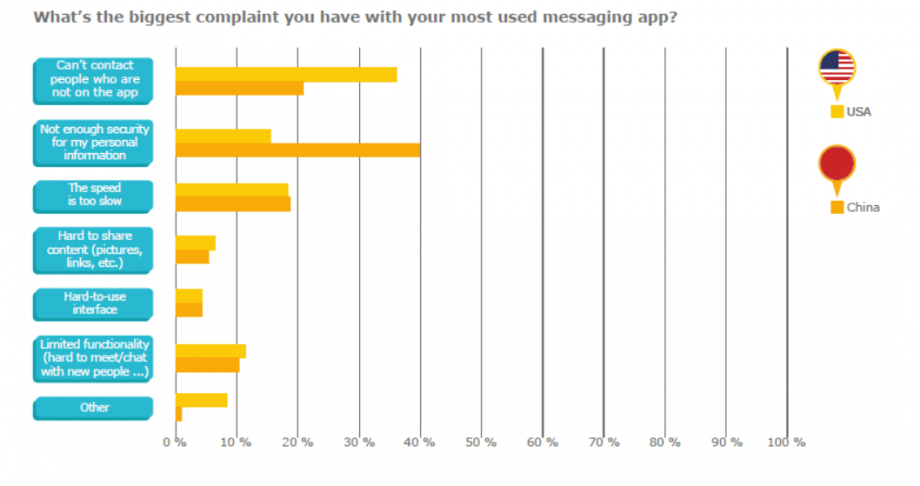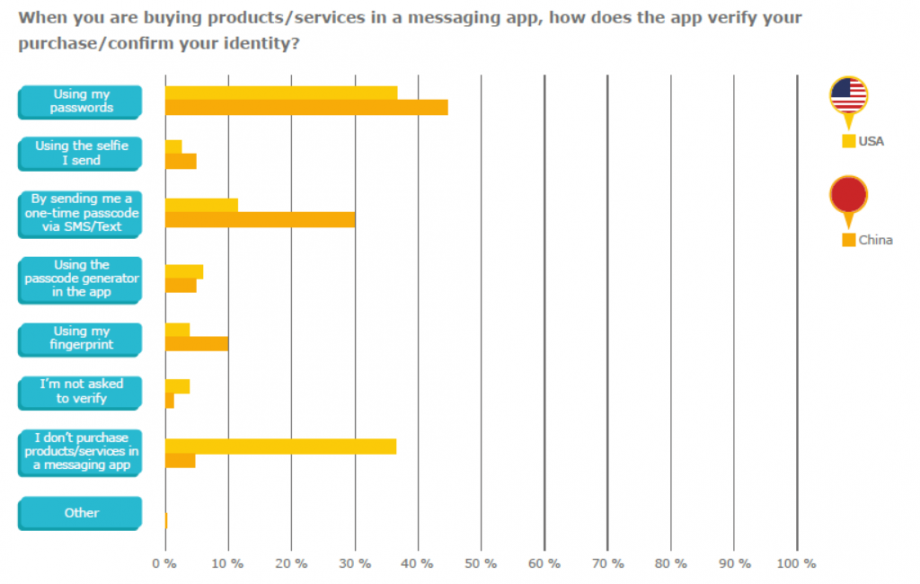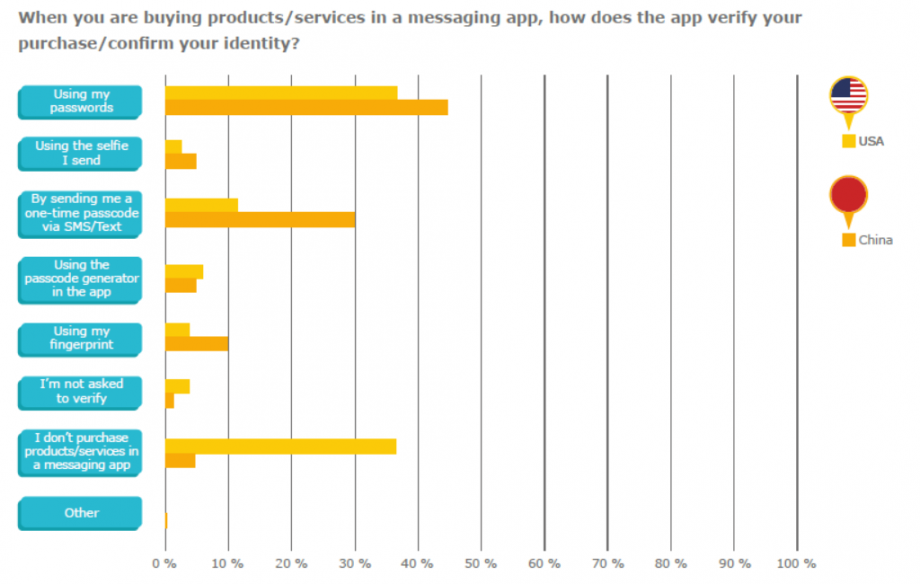4 Challenges Facing the Messaging Industry

It was only just a few years ago when many of us assumed that social networks would soon become the dominant form of communication. With Facebook then approaching a billion users (which it has since surpassed) and the rapid ascendancy of platforms like Instagram and Twitter, it wasn’t too difficult to imagine a future in which younger generations eschewed traditional forms of communication like email and voice calls and instead interacted mainly on social sites.
One-to-One Messaging is still very popular
But while social media use shows no signs of deteriorating, we’ve witnessed the quick rise of one-to-one messaging apps, many of which have amassed hundreds of millions of users and multi-billion dollar valuations. According to Juniper Research, messaging app users sent 94.2 trillion messages in 2014 and a few apps are poised to reach the billion user mark, possibly within the next year.
Yet one-to-one messaging might only be the beginning for this growing sector of the app ecosystem. In China, where the WeChat app is dominant, it’s now common for users to partake in money transactions through the app, performing everything from hailing a taxi to ordering food. Line, a major messaging app in Japan, generated over $220 million selling icons and games in the third quarter of 2015. Could we soon see the majority of transactions and interactions occurring within these apps?
But though messaging apps have made tremendous headway, there are still several barriers standing in the way of these platforms reaching their fullest potential. To gain a better understanding of the challenges facing the messaging app space and the pain points their users experience, tyntec, a telecom-web convergence company, conducted online surveys in two major mobile markets — the U.S. and China. We also conducted in-depth one-on-one interviews with seasoned developers, investors, and researchers who work in the mobile app industry. Our goal was to answer two questions:
- Do OTT messaging apps have the potential to become the dominant form of mobile interaction?
- What barriers stand in their way as they attempt to expand into new geographies and offerings?
Here are the four biggest challenges we identified in our research (you can read the full report over here):
Messaging app use is still situational
Though messaging apps are making steady gains on social networks, social media platforms still reign supreme in terms of how both American and Chinese respondents most frequently communicate with their contacts. We asked them to rank their modes of communication from “most used” to “least used,” and social media came out on top in both countries. American respondents ranked messaging apps as the second most-used form of communication, followed by voice calls, email, and SMS. Chinese respondents ranked email as their second most-used form of communication, followed by SMS, voice calls, and messaging apps. However, when we asked respondents what they use when they want to contact someone immediately, voice calls still rule both in the U.S. (44%) and China (55%). But while American respondents chose SMS texts as their second choice for immediate communication (38%), messaging apps took the second spot in China (31%).
This doesn’t mean social media and messaging apps are necessarily in competition with each other. Reinder de Vries, an app developer who has created apps for Tommy Hilfiger, Heineken, and other major brands, predicted that social platforms will be increasingly viewed as a way to broadcast to loosely-tied networks, whereas messaging apps will serve as modes of back-and-forth conversation. Danielle Levitas, a senior vice president of research at App Annie, also argued these two mediums serve different purposes. “For social networks, I think of it basically as one to many,” she said. “Messaging is — if not one to one, one to a defined number of people.”
Messaging apps lack interoperability
Messaging apps are often commonly invoked as a replacement for traditional telecom services like SMS and voice calls. If you wanted to speak to someone in Thailand 20 years ago, you had to make a very expensive international phone call to do so. Now you can get on Skype and conduct the same conversation for free.
However, say what you will about traditional phone services, but at least they’re universal. “There is a highly siloed or fragmented mobile chat ecosystem where if you are a WhatsApp user, you cannot chat with a WeChat user,” said Keith Teare, who as a partner at Archimedes Labs has invested in and incubated multiple messaging apps. He pointed to all the stages a messaging app user must go through to message a contact. “You first have to know which app they have; then you must install the same app; you discover their identity within their app; you send an invitation to chat; they approve that invitation; and now you can finally chat, and that compares to a phone call where if you know the number, you simply call and talk. The same goes for email; all you need to know is email address and you can send it. Email, voice, and SMS are truly universal, where the address alone is sufficient to make the connection.”
Our survey data reflected user dissatisfaction that it’s impossible to communicate between different apps. Many U.S. respondents (36%) are frustrated that they can’t message all their contacts from a single app. Of those who do use messaging apps, Chinese respondents are much more likely to use multiple messaging apps (90%) compared to Americans (60%). Most users are using between two and three messaging apps regularly. More than 10% of U.S. respondents and 17% of Chinese respondents use four or more messaging apps regularly.

Users are worried about security
In China, the biggest complaint from messaging app users (40%) is the lack of security, which may reflect worries about Internet surveillance, as well as in-app transactions that are more common in China compared to the U.S. Fifteen percent of U.S. respondents were also worried about there being enough security.
One of the chief challenges messaging app companies face is how to provide security and verification for in-app purchases. Is a simple password adequate? Should there be two-factor authentication in the form of a one-time passcode (OTP) via SMS text? We asked our respondents how the apps they use typically verify their purchases. In the U.S., 36% said they just use passwords and only 11% use one-time passcode sent via SMS texts, whereas in China those numbers are 45% and 30%, respectively. In both countries OTP SMS is the most widely used verification method beyond using just passwords.

Users are worried about security
In China, the biggest complaint from messaging app users (40%) is the lack of security, which may reflect worries about Internet surveillance, as well as in-app transactions that are more common in China compared to the U.S. Fifteen percent of U.S. respondents were also worried about there being enough security.
One of the chief challenges messaging app companies face is how to provide security and verification for in-app purchases. Is a simple password adequate? Should there be two-factor authentication in the form of a one-time passcode (OTP) via SMS text? We asked our respondents how the apps they use typically verify their purchases. In the U.S., 36% said they just use passwords and only 11% use one-time passcode sent via SMS texts, whereas in China those numbers are 45% and 30%, respectively. In both countries OTP SMS is the most widely used verification method beyond using just passwords.

The West is slow to adopt in-app purchasing
In our user survey one of the most striking differences we found between Chinese and American messaging app users is their experience with in-app purchases. In the U.S., 36% of respondents say they never make purchases within messaging apps, whereas in China that number is 4.5%. Why the disparity? And will in-app purchases achieve ubiquity in the U.S. where standalone apps like Uber and GrubHub still dominate?
Steve Young, host of the App Masters podcast, expressed doubt that purchases within messaging apps would ever take off in the U.S. “We like the fact we can use Yelp for reviews,” he said. “We like that we can go to GrubHub for delivery. We like these siloed experiences.” Instead, he thought that messaging apps would compete in terms of the communication features they offer. Periscope, for example, has gained traction in a crowded market because it offers live streaming video. Other apps might gain a competitive advantage by offering stickers or other modes of communication.
Others pointed out that it’s WeChat’s near-universal adoption (over 90%) that has allowed it to spread beyond messaging. “Ubiquity is key,” said Teare. “Because when everyone’s on it, including every taxi driver, then you can really start to think about increased functionality.” In the U.S., the most popular app, Facebook Messenger, only has about 46% adoption among users, so that ubiquity has yet to be achieved. Once it does achieve ubiquity, he suggested, then it’ll have enough leverage to lure ecommerce companies onto its platform.
There’s no question as to whether messaging apps are exploding in adoption and satisfy a real need. But if they’re to live up to their full potential, offering up both universal messaging capabilities and the ability to engage in secure commerce transactions, there are still a number of technological, geographic, and cultural hurdles to overcome. Only then will they be considered a true alternative to the telecom services that have dominated over the past several decades.
“What our survey shows is that OTT messaging apps are at a critical point of inflection. App brands must address user concerns over security and interoperability if they want to enter the next phase of growth,” said Thorsten Trapp, CTO of tyntec. “Especially where regulatory barriers limit their options, finding technological solutions and partners that can bridge the divide and deliver the universal reach and strong security is key.”
